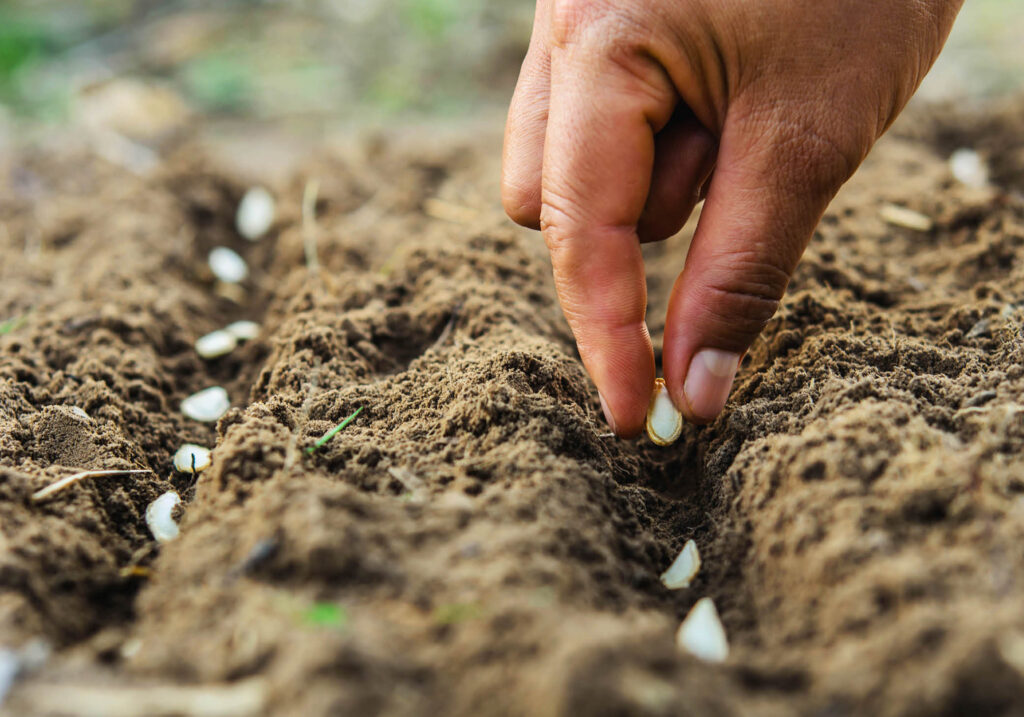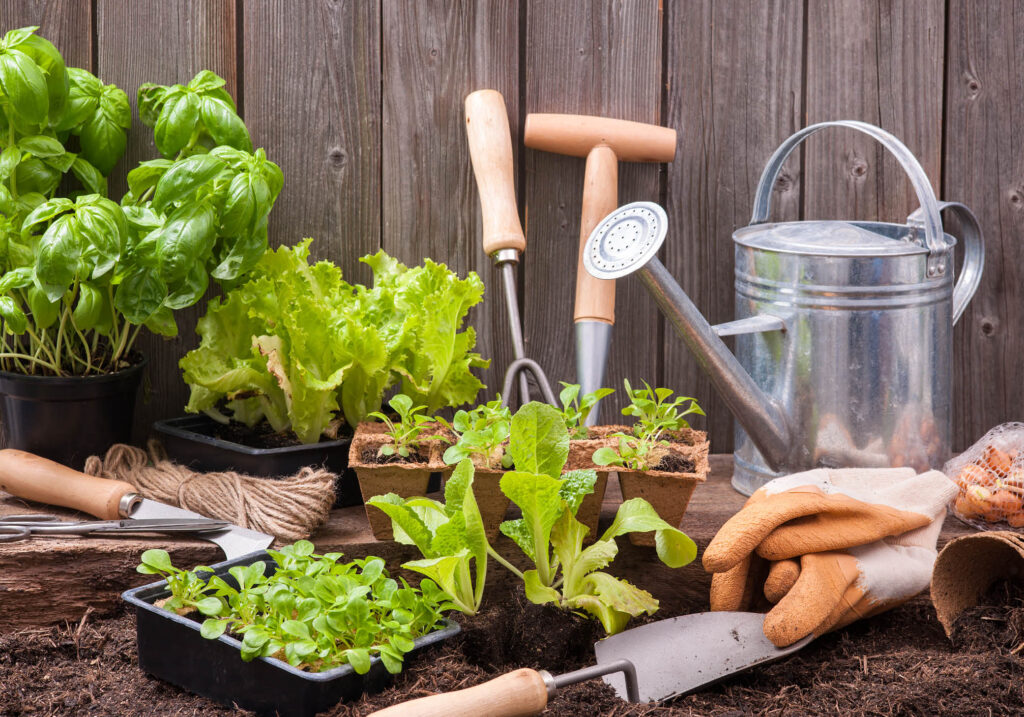The key to a successful spring vegetable garden lies in the planning stage. Once you have the spot picked out, you have to prepare the ground, create a layout, get vegetable ideas and buy supplies and plants. For the best chance of success, choose easy-to-grow vegetables like lettuce and zucchini. You can expand your horizons by adding some herbs and fruit plants, as well.
If you are starting the plants from seeds, you will have to have the right containers to start them indoors. Otherwise, buy young plants with established root systems. Depending on what USDA plant hardiness zone you live in, certain vegetable plants will be recommended for spring planting. Martha Stewart explains that warm-season crops like beans, tomatoes and eggplants do best in the heat, and some vegetable plants have longer growing seasons than others.
 Growing Plants From Seeds
Growing Plants From Seeds
Martha Stewart also advises gardeners to check the plant-by dates when purchasing high-quality seed packets to ensure that they are for the current year. You can use any type of container for planting seeds, but it must have drainage holes. You may wish to plant several seeds in larger pots, which is a convenient way to start them. Another choice is to use planting trays, which are divided into smaller sections.
Use regular potting soil, a sterile, soilless mix, a seed-starting mix or make your own if you are a skilled gardener or growing plants with specific requirements. Do not add compost or topsoil into the containers at this stage, because either can ruin your seeds.
Put your potting mix in a large bucket and add some water until it is moist. Place the containers on newspaper, fill them up with the mix and tamp down gently. Dig out the seed holes with a pencil, making them twice as deep as the seeds are thick.
The containers can be covered with clear plastic wrap to encourage germination, though you may wish to poke a few holes in the plastic to avoid mold growth. Place the containers or trays in a warm room by a sunny window. You can also use grow lights, provide the full UV spectrum of light to your seedlings. Mark the containers with labels so you don’t mix up the plants. Check them daily and water as needed – you can also add some diluted fertilizer when they begin to sprout.
Making a Garden Blueprint
Take some graph paper to draw out your garden plan before you do any digging. Vegetable plants like tomatoes and corn can grow quite tall, and you don’t want them to block the sunlight from their companions. You do not have to start with a large number of plants, because you can also add more later if you have the space.
The number of inches required between the same kinds of vegetable plants varies, and you can find vegetable spacing guides online. Zucchini needs about 24 to 28 inches, while spinach only needs 2 to 4. If you are planting multiple rows of vegetables, these distances also vary; check the guide or your seed packet for this information, as well. You will need room to walk back and forth between your plants if planting in a traditional rowed garden.
You can dig stakes into the ground at the ends of your garden rows, and connect each one with string. This will help you dig the plant holes in a straighter line. If any of the plants came with information tags, stick those in the ground alongside them.
 Preparing The Garden Soil
Preparing The Garden Soil
If you want to transplant seedlings outdoors, plan ahead by placing them outside two weeks before the planting. Leave them out for a few hours at first, and gradually build this up to strengthen them. Your plants will need a sunny garden that gets from six to eight hours of direct sunlight each day. Do not choose a spot that gets a lot of wind, because this could damage the plants and keep pollinators like bees away.
The best kind of soil for vegetable plants is packed with nutrients. The best way to ensure this is to mix in organic matter like compost or manure when the soil is moist (not wet). Check the soil for rocks and weeds, and rake them off and away. Then, use a shovel to loosen up the soil, digging down to 8 to 12 inches.
Spread at least 2 to 3 inches of compost or manure onto the soil. You can work it into the earth if you like, but this is not necessary. You can level out the soil with a rake, or build up the beds slightly. Now you can dig the holes and start getting those plants in the ground. Before you know it, you will have plenty of fresh produce to bring to the table.
Source copied from: https://www.bhgre.com/bhgrelife/vegetable-garden-ideas/

 Facebook
Facebook
 X
X
 Pinterest
Pinterest
 Copy Link
Copy Link
 Growing Plants From Seeds
Growing Plants From Seeds Preparing The Garden Soil
Preparing The Garden Soil
